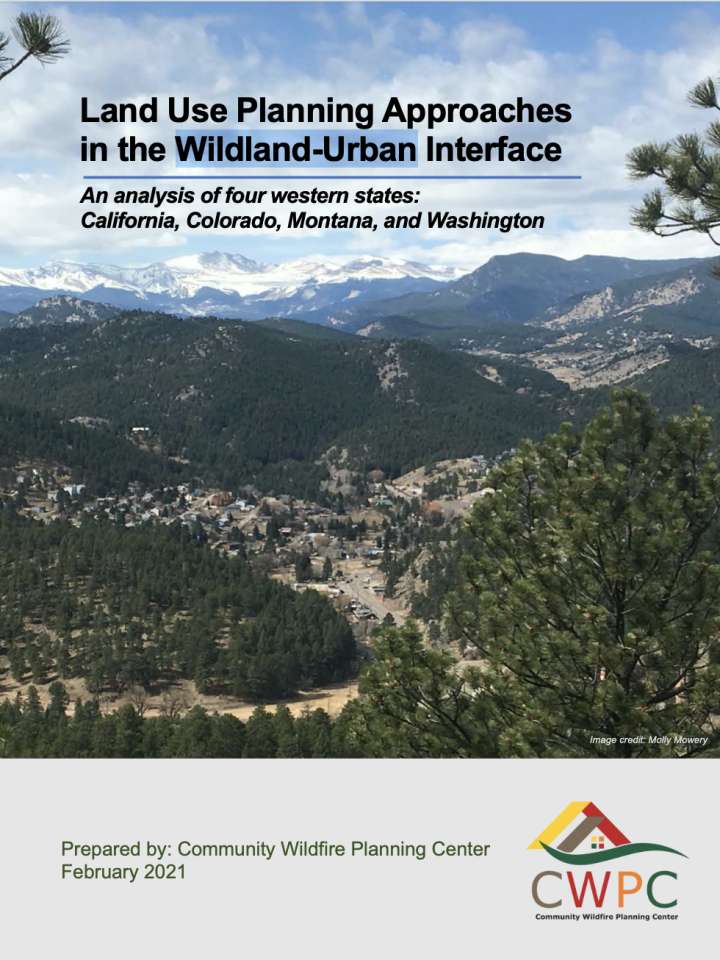Land use planning approaches in the wildland-urban interface: An analysis of four western states: California, Colorado, Montana, and Washington
This report focuses on a critical aspect of working towards community fire adaptation: analyzing effective land use policy and regulatory solutions in the wildland-urban interface (WUI). The WUI is any area where the built and natural environments create a set of conditions that allow for the ignition and continued spread of wildfire. The severity of how wildfire impacts the WUI is influenced by a number of factors, such as where and how homes, businesses, and infrastructure are developed, weather conditions, and the amount, type, and arrangement of vegetation.
The findings of this report illustrate that there are many opportunities within each state and across all four states to advance WUI risk reduction objectives through land use planning. Broad solutions synthesized from all four states focus primarily on state-level policy and funding activities:
- Adopt state legislation for minimum wildfire hazard planning requirements.
- Integrate the role of land use planning expertise in WUI initiatives.
- Promote learning opportunities to engage planners on WUI topics.
- Dedicate resources and funding to support risk reduction in the existing WUI.
- Identify and transfer land use planning practices from other hazards to wildfire.
Explore further
